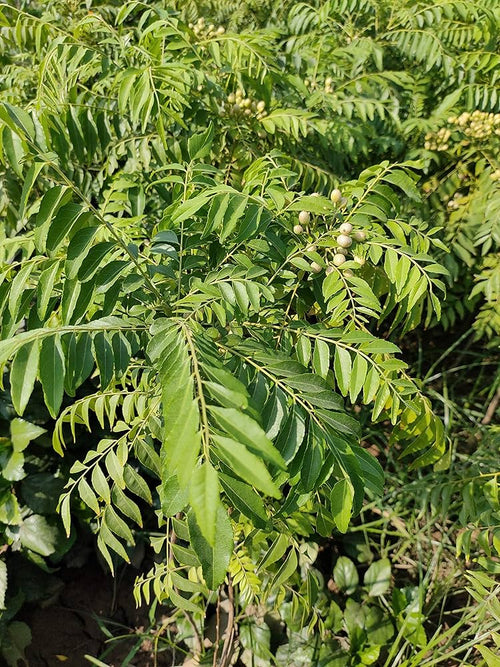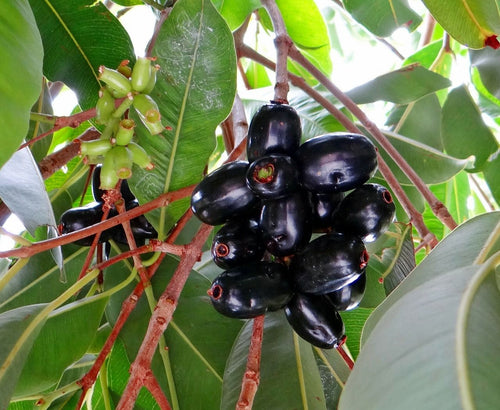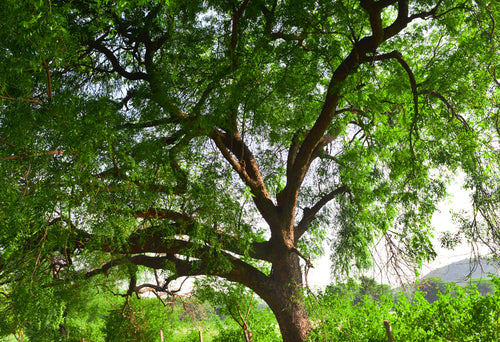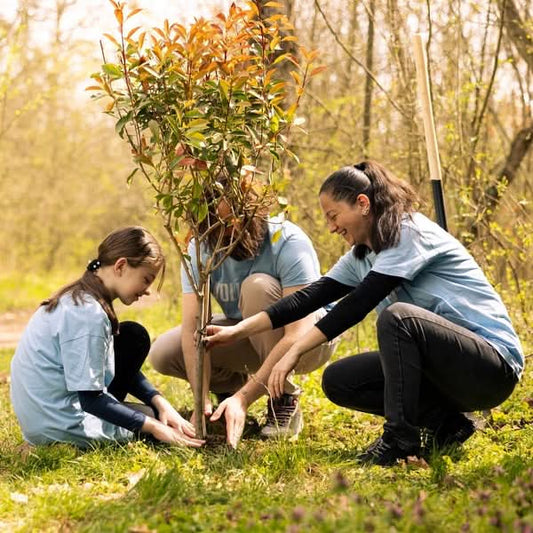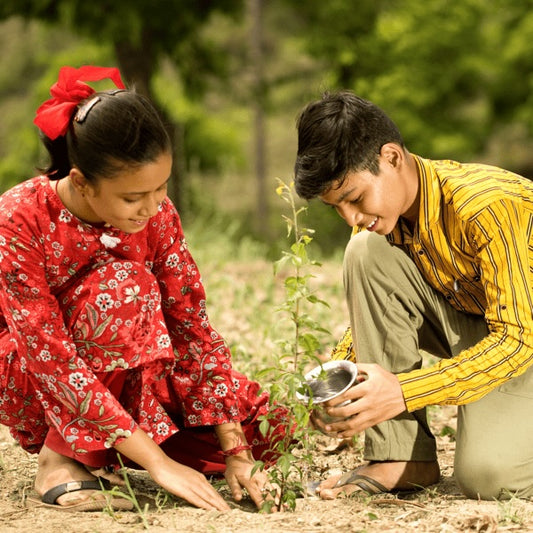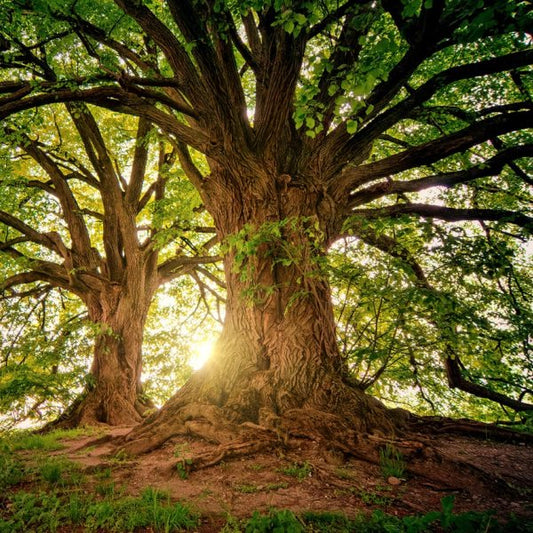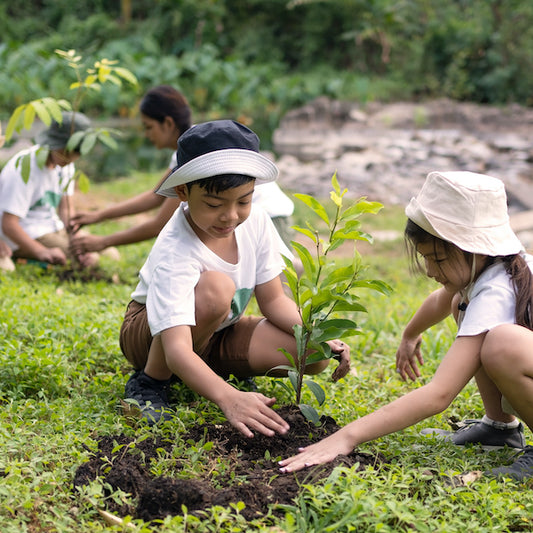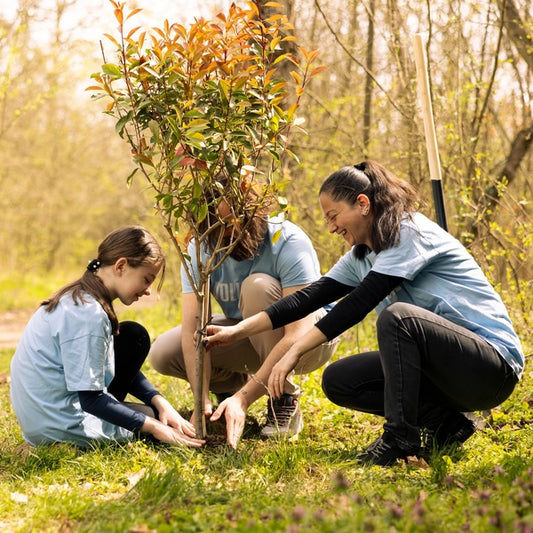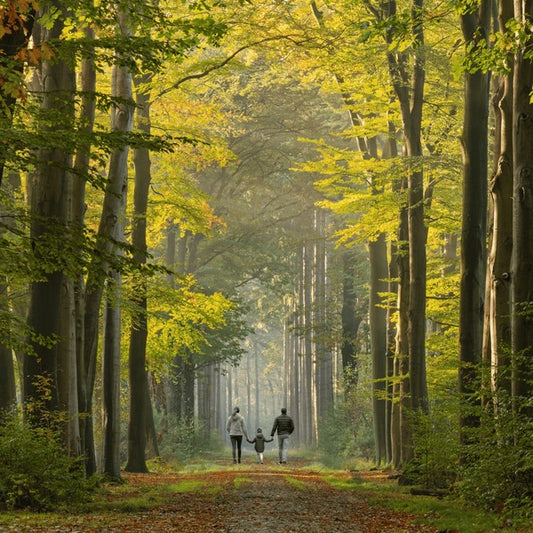Honoring Surgeons, Cultivating Sustainability: Johnson & Johnson’s Tree Plantation Initiat
In celebration of achieving the milestone of 100 Veritas installations across India, Johnson & Johnson Surgical Vision India organized a transform Read more
Project Update 3
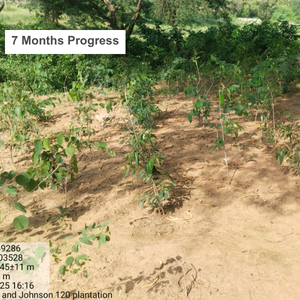

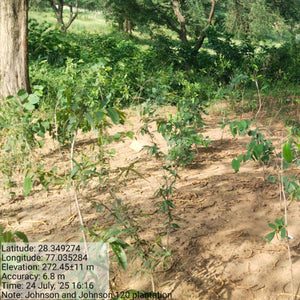
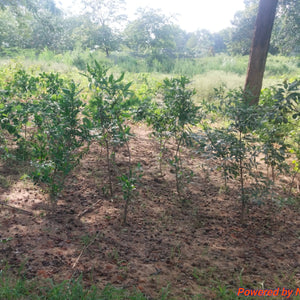
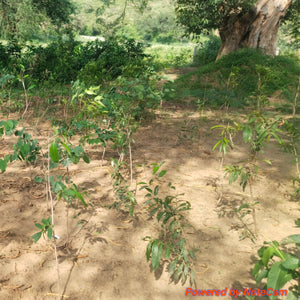

Project Update 2
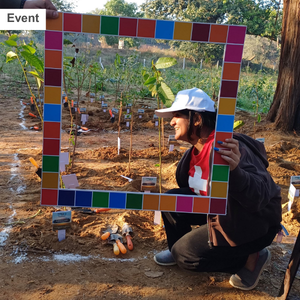

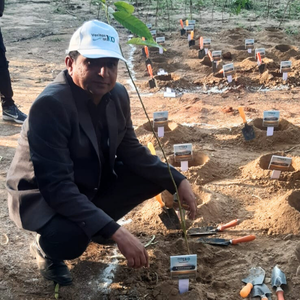
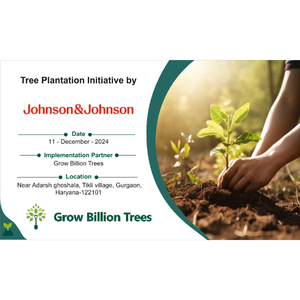
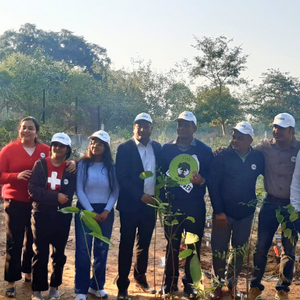
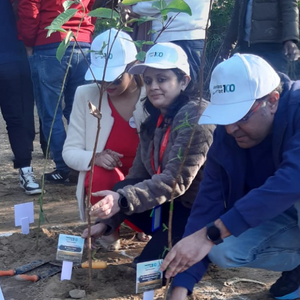

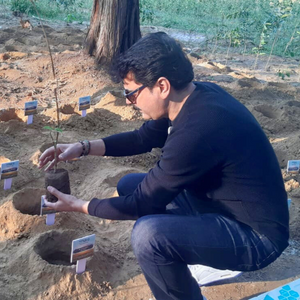
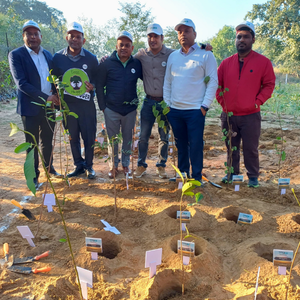
Project Update 1
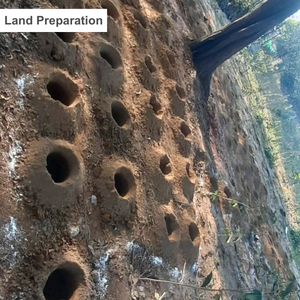
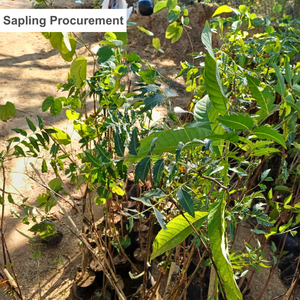
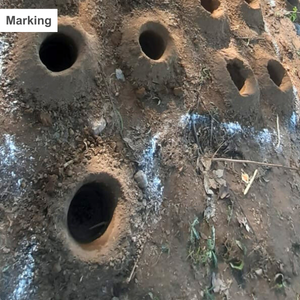
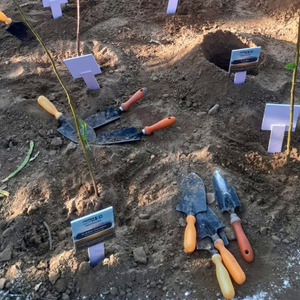
Digital Forest
Forest with 120 Trees planned
Want to plant your tree now?
Plant a Tree @ 299Trees Planted
Honoring Surgeons, Cultivating Sustainability: Johnson & Johnson’s Tree Plantation Initiative in Haryana
In celebration of achieving the milestone of 100 Veritas installations across India, Johnson & Johnson Surgical Vision India organized a transformative tree plantation drive in Tikli Village, Haryana. This initiative, rooted in the urban forest concept, was conducted on community land, aiming to benefit the local village community both environmentally and socially.
The plantation drive symbolized Johnson & Johnson’s commitment to sustainability and its dedication to creating a positive impact beyond healthcare. By engaging in this green initiative, the company honored the invaluable contributions of surgeons who have partnered in advancing eye care solutions. The effort also reinforced the importance of environmental stewardship, contributing to the creation of a lush, sustainable green space for the Tikli Village community.
This endeavor highlighted Johnson & Johnson Surgical Vision India's dual mission of improving quality of life through innovation in eye care and fostering a healthier planet. The plantation on community land ensures long-term benefits for the local population, aligning with the company's vision of nurturing a greener, more inclusive future for all.
Project Planning & Execution
No. of trees: 120 Trees
Plantation Location: 922P+497 Tikli Village, Haryana 122101
Plantation Date: 11th December 2024
Name of Species: Bhaunia, Neem, Jamun, Arjun
Species Selection & Its Benefits:
The species selected for Johnson & Johnson’s urban forestry initiative were carefully chosen to align with the local ecosystem and maximise ecological benefits. The focus was on planting a mix of native, shade-providing, and fruit-bearing species, including Bhaunia, Neem, Jamun, and Arjun, to support biodiversity, offer habitats for wildlife, and contribute to the sustainability of urban environments.
Bhaunia (Bauhinia spp.), Neem (Azadirachta indica), Jamun (Syzygium cumini), and Arjun (Terminalia arjuna) are ecologically and medicinally important tree species. Bhaunia improves soil fertility through nitrogen fixation and attracts pollinators, while its leaves and flowers are used in traditional medicine.
Neem purifies air, improves degraded soil, and offers antibacterial and antifungal benefits, widely used in agriculture, personal care, and traditional healing. Jamun prevents soil erosion with its strong roots, supports wildlife with its fruit, and its pulp and seeds are known for managing diabetes and enhancing digestion. Arjun, known for stabilising riverbanks and enriching biodiversity, is highly valued in Ayurveda for its bark, which strengthens the heart and helps manage blood pressure and cholesterol. These trees collectively promote environmental sustainability and enhance human health and well-being.
Planting Methodology and Its Advantages
Urban Forest: An urban forest is a network of trees, shrubs, and vegetation strategically planted in urban areas to enhance biodiversity, improve air quality, reduce the urban heat island effect, and provide green spaces for community well-being. It helps mitigate climate change by absorbing carbon dioxide, promotes mental health through accessible green areas, and supports local wildlife by creating habitats. Urban forests play a vital role in building resilient, sustainable cities that benefit both the environment and the people who live in them.
Advantages of Urban Forest
-
Climate Regulation and Cooling Effect: Urban forests help mitigate the urban heat island effect by providing shade and cooling through transpiration, lowering temperatures in cities, reducing the need for air conditioning, and conserving energy.
-
Improved Air Quality: Trees absorb pollutants like carbon dioxide, nitrogen oxides, and particulate matter, leading to improved air quality and reducing the risk of respiratory illnesses in urban areas.
-
Stormwater Management and Flood Prevention: Urban forests improve the soil’s ability to absorb and retain water, reducing stormwater runoff, preventing flooding, and promoting groundwater recharge, thus helping manage water resources efficiently.
-
Soil Erosion Control: The deep root systems of trees prevent soil erosion, especially in areas with heavy rainfall or steep slopes, stabilizing the land and reducing soil loss in urban environments.
-
Aesthetic and Recreational Value: The transformation of unused spaces into green zones adds aesthetic value to the area and provides employees and local communities with recreational spaces, making the workplace more enjoyable.
-
Enhanced Community Engagement and Well-being: Urban forests provide accessible green spaces where communities can engage in recreational activities, improving mental health, reducing stress, and fostering a sense of environmental stewardship among residents and employees.
-
Increased Property Value: Properties located near urban forests or green spaces tend to have higher market values, benefiting local property owners and increasing the overall appeal and livability of the area.
- Noise Reduction: Urban forests act as natural sound barriers, reducing noise pollution and creating quieter, more peaceful surroundings.
Activities During Tree Plantation
To commemorate the milestone of 100 Veritas installations across India, Johnson & Johnson organised a special tree plantation drive on 11th December, 20204 at Tikli Village, Gurugram. This initiative celebrated not only a remarkable achievement in healthcare innovation but also honoured the contributions of the surgeons and hospitals involved.
A commemorative placard was unveiled at the site, symbolising this significant milestone. Each tree planted was marked with a placard bearing the name of the hospital and its city, where a Veritas system had been installed, making the plantation a tribute to the medical institutions and their role in advancing patient care.
Employees actively participated in planting native and fruit-bearing trees, contributing to urban greening while gaining awareness about sustainable environmental practices. The carefully planned layout of pre-dug pits and placards enhanced the experience, adding purpose and meaning to every tree planted.
The drive concluded with a reflection session, allowing participants to acknowledge their contributions to this greener initiative. The event exemplified Johnson & Johnson’s commitment to sustainability, community impact, and corporate responsibility, blending technological progress with environmental action.
Impact
Direct Impact
|
Parameters |
Values |
References |
|
No. of Trees Planted |
120 |
|
|
Green Cover (Acres) |
0.04 acre |
|
|
Carbon Sequestration Potential (KG) |
20 |
Small to medium-sized trees can sequester around 10–48 kilograms (22–106 pounds) of CO₂ annually. https://growbilliontrees.com/blogs/knowledge/how-much-co2-can-one-tree-absorb |
|
Carbon Sequestration by 120 mature trees ( Tons/year) |
2.4 Tons |
No. of Trees x Carbon Sequestration by 1 mature tree per year |
|
Carbon Credit Equivalent |
2.4 |
One carbon credit is equivalent to one tonne of carbon dioxide or the equivalent amount of another greenhouse gas. |
|
Carbon Footprint of an avg Indian Citizen (Tons/Year) |
1.8 |
|
|
Offsets Annual Carbon Footprint of (Adults) |
1 |
Carbon offset by 120 mature trees per year / Carbon Footprint of an avg Indian Citizen per year |
*This impact analysis is forward-looking (An urban-forest project matures in 3-5 years)
Indirect Impact
Community Impact
-
Improved Public Health: By improving air quality and reducing urban heat, the project indirectly contributes to better public health. The presence of green spaces encourages outdoor activities, which can reduce stress levels, promote mental well-being, and decrease the incidence of respiratory diseases.
-
Environmental Awareness: Involving communities in urban forestry raises awareness about environmental conservation and promotes sustainable practices in daily life.
-
Employee Morale: The initiative fostered a sense of pride and connection among employees, strengthening team bonds and their alignment with the company’s values.
-
Inspiration for Change: By showcasing the potential of urban forestry, the project has encouraged other organisations and local communities to undertake similar initiatives.
-
Cultural Shift: The initiative instilled a mindset of sustainability and environmental care among participants, creating advocates for green practices in their personal and professional lives.
Environmental Impact
-
Carbon Sequestration: The trees planted through Johnson & Johnson's urban forestry initiative absorb carbon dioxide, acting as carbon sinks and helping mitigate climate change by reducing greenhouse gas emissions.
-
Soil Health Improvement: The tree planting initiative enhances soil health by enriching it with organic matter, improving soil fertility and structure, which supports the growth of surrounding vegetation.
-
Erosion Prevention: Tree roots help stabilise the soil in urban areas, preventing erosion caused by wind and water, while safeguarding nearby properties and infrastructure from potential damage.
-
Biodiversity Conservation: By creating green spaces, the initiative supports local biodiversity, providing habitats for various species, pollinators, and beneficial insects, and enhancing the ecological balance in urban areas.
-
Water Cycle Regulation: The urban forestry project helps regulate the water cycle by improving water retention in the soil, recharging groundwater levels, and reducing surface runoff, leading to a more balanced and sustainable urban environment.
-
Microclimate Regulation: Trees planted through this initiative moderate temperature extremes, reduce wind speeds, and increase humidity, creating a favourable microclimate for both the community and the urban ecosystem.
Achievements
SDG Goals Achieved through Urban Forest
-
SDG 3: Good Health and Well-Being – Johnson & Johnson’s urban forestry project enhances air quality and creates green spaces that promote physical and mental well-being, reducing stress and fostering a healthier urban lifestyle.
-
SDG 6: Clean Water and Sanitation – Trees play a crucial role in water conservation by enhancing groundwater recharge, reducing surface runoff, and improving overall water retention. Johnson & Johnson’s initiative supports sustainable urban water systems through afforestation and green infrastructure.
-
SDG 7: Affordable and Clean Energy – By mitigating the urban heat island effect, Johnson & Johnson’s tree plantation efforts help lower ambient temperatures and reduce reliance on artificial cooling. The shade provided by trees enhances energy efficiency and promotes a more sustainable urban climate.
-
SDG 8: Decent Work and Economic Growth – The initiative generates employment opportunities in tree planting, maintenance, and ecological restoration, contributing to local economic development and green job creation.
-
SDG 9: Industry, Innovation, and Infrastructure – Johnson & Johnson integrates sustainable urban forestry into infrastructure planning, promoting green innovation and enhancing urban resilience.
-
SDG 10: Reduced Inequalities – The initiative ensures inclusivity by engaging employees from diverse backgrounds in environmental conservation. By creating accessible green spaces, Johnson & Johnson promotes environmental equity and ensures that all communities, including marginalised groups, benefit from cleaner air, mental well-being, and recreational opportunities.
-
SDG 11: Sustainable Cities and Communities – Johnson & Johnson’s commitment to urban afforestation contributes to creating more sustainable and resilient cities by increasing green cover, improving air quality, and enhancing urban biodiversity.
-
SDG 12: Responsible Consumption and Production – Johnson & Johnson’s commitment to sustainability is reflected in its responsible approach to urban forestry, focusing on resource efficiency and long-term environmental benefits.
-
SDG 13: Climate Action – The plantation initiative actively supports climate action by sequestering carbon, reducing greenhouse gas emissions, and mitigating climate change effects through the expansion of green spaces.
-
SDG 15: Life on Land – By restoring green spaces with native and fruit-bearing trees, the initiative strengthens biodiversity, supports wildlife, and contributes to a thriving urban ecosystem.
-
SDG 16: Peace, Justice, and Strong Institutions – By fostering inclusive decision-making and community-led governance, Johnson & Johnson strengthens local environmental stewardship, ensuring transparency and collaboration for sustainable urban development.
-
SDG 17: Partnerships for the Goals – The initiative thrives on collaboration with local communities, environmental organisations, and partners such as Grow Billion Trees. Johnson & Johnson strengthens environmental partnerships to drive impactful urban sustainability and afforestation efforts.
ESG Achieved through Urban Forest:
-
Environmental Impact: Johnson & Johnson’s urban forestry initiative significantly enhances environmental sustainability. By planting diverse tree species, the company boosts biodiversity, creates habitats for wildlife, and supports local ecosystems. The trees act as carbon sinks, reducing CO2 levels and mitigating climate change. Additionally, the initiative improves urban climate resilience by regulating temperatures, reducing the heat island effect, and enhancing water retention, ensuring long-term ecological health for future generations.
-
Social Impact: Johnson & Johnson’s urban forestry initiative fosters community engagement and well-being by encouraging local participation in tree planting and environmental awareness. The green spaces created improve air quality, promote physical activity, and enhance public health. The project generates job opportunities in tree planting and maintenance while promoting social equity by ensuring access to green spaces for all, including marginalised groups. These efforts build a more inclusive, resilient, and sustainable community.
-
Governance Impact: Johnson & Johnson demonstrates strong leadership and commitment to sustainability through its urban forestry initiative. The company ensures transparency and accountability by effectively communicating project plans and outcomes to stakeholders. By collaborating with environmental organisations and local communities, it amplifies the impact of its efforts. This approach aligns with best governance practices, achieving environmental and social goals while promoting long-term sustainable growth.
Building Communities
One of the most impactful outcomes of Johnson & Johnson’s urban forestry initiative was the sense of unity and collaboration it cultivated. By involving employees, local communities, and volunteers, the project became a collective mission to create sustainable urban green spaces, fostering a shared commitment to a greener future.
-
Empowering Communities: Participants became active contributors, gaining knowledge about urban forestry practices and taking ownership of the initiative. This empowerment strengthened their connection to the environment and reinforced their role as environmental stewards.
-
Fostering Partnerships: The project brought together diverse stakeholders, including Johnson & Johnson, Grow Billion Trees, and local communities, highlighting the value of collaboration in achieving environmental and social goals.
-
Creating a Ripple Effect: As communities experienced the benefits of urban forestry, their enthusiasm inspired others to adopt similar practices, amplifying the initiative's positive impact across the region.
This initiative demonstrates that environmental sustainability thrives when rooted in collective effort. It’s not just about planting trees—it’s about planting hope, collaboration, and a shared vision for a healthier and greener future.
Commitment by Grow Billion Trees
-
Ensuring Tree Survivability: GBT prioritises native species, continuous monitoring, and soil health improvement using organic fertilisers. These efforts ensure sustainable growth and benefit communities.
-
Transparency & Accountability: GBT provides detailed reports on tree growth, survival rates, and carbon benefits, using geo-fencing and regular updates to maintain transparency and effectiveness.
-
Sustainable Plantation Efforts: GBT implements projects that balance environmental, social, and economic goals, addressing issues like urban heat islands and degraded farmlands. These efforts promote ecological balance, livelihoods, and long-term climate resilience.
-
Enhancing Ecosystem Health: By selecting native species and creating diverse habitats, GBT enhances biodiversity and ecosystem resilience, ensuring long-term ecological health and supporting wildlife.
-
Long-Term Impact: GBT’s initiatives tackle environmental challenges, foster climate resilience, and promote sustainable development while reducing carbon footprints.
Acknowledgment
We at Grow Billion Trees extend our heartfelt gratitude to all those who have contributed to the success of the urban forestry initiative across Gurugram. This project, which combines environmental sustainability with employee engagement, would not have been possible without the support and collaboration of our dedicated employees, local authorities, and partners. Their collective efforts in planting and nurturing trees are helping create a greener and more resilient future for urban communities. We are thankful for their commitment to fostering biodiversity, improving air quality, and promoting a sustainable future.
To Johnson & Johnson: We sincerely thank you for your dedication to sustainability and employee engagement. Your innovative approach to urban forestry has laid the foundation for a greener, more resilient future in Gurugram. Through your efforts, 120 trees have been planted, fostering biodiversity, improving air quality, and creating lasting positive impacts on the environment. Together, we have created a legacy that will continue to benefit urban communities and contribute to a sustainable tomorrow.
To Our Ground Partners and Volunteers: Your expertise, dedication, and passion for environmental sustainability have been crucial to the success of Johnson & Johnson’s urban forestry initiative. Through your collaborative efforts, we have made meaningful strides in creating greener urban spaces and promoting biodiversity across Gurugram. Your contributions have not only enhanced the environment but also fostered community engagement and awareness. Together, we are building a more sustainable future, and we look forward to continuing our partnership in creating a greener, healthier world for all.
Thank you for your unwavering support and commitment.
Closing Remarks
In recognition of achieving 100 Veritas installations across India, this initiative pays tribute to the invaluable contributions of surgeons, upholds our enduring commitment to sustainability, and underscores our continued pursuit of a greener and more responsible future.
This project has not only enhanced urban greenery but has also fostered a sense of community engagement and environmental stewardship. It highlights the power of collaboration, where every contribution, big or small, brings us closer to a healthier, more sustainable future.
As we look ahead to the continued success of this initiative, we are committed to expanding our efforts and inspiring others to join us in creating lasting positive change. Together, we are laying the foundation for a world where urban sustainability, community empowerment, and responsible practices thrive.
Thank you to everyone who has been part of this meaningful endeavour. Let’s continue working together to make a difference for today and future generations.
Trees for Corporates
Trending
Most Popular
1. Johnson & Johnson Urban Forest Initiative
Transforming Green Visions into Reality Who says healthcare companies only heal people? Johnson & Johnson Surgical Vision India decided to heal the planet too! With their urban forest initiative in Tikli Village, they planted not just saplings but also hope for a greener tomorrow. Celebrating 100 Veritas installations across India, the doctors swapped scalpels for shovels, proving their skills aren’t limited to surgery. This urban forest isn’t just a bunch of trees—it’s a carbon-sucking, oxygen-pumping superhero squad! Plus, it’s on community land, giving the local residents an eco-friendly hangout spot. Who needs air purifiers when you’ve got nature doing the job for free?
2. Sustainability Goals of Johnson & Johnson Tree Plantation
Nature Gets a Facelift Forget facials—Johnson & Johnson just gave Tikli Village a full-blown green makeover. By planting trees and creating an urban forest, they’re not only beautifying the community but also tackling pollution and climate change head-on. It’s like Botox for the environment, only better because it’s free and long-lasting! Talk about going above and beyond healthcare, right? This initiative is a big win for SDG 13 (Climate Action), with bonus points for biodiversity and happy villagers.
3. Doctors Planting Trees
The Green Prescription We All Need Move over, stethoscopes—these doctors are now wielding watering cans! As part of Johnson & Johnson’s tree plantation drive, doctors turned eco-warriors, planting saplings and nurturing them with care. It’s not every day you see medical professionals prescribing photosynthesis! Their involvement added a personal touch, making this initiative more than just a corporate event—it’s a heartfelt gesture to give back to nature.
4. Tikli Village Urban Forest
once barren community land now buzzing with life, from chirping birds to shady trees swaying in the breeze. This lush makeover is more than eye candy; it’s a breath of fresh air—literally! It’s the kind of transformation that makes you want to pack a picnic basket and bask in nature’s glory.
5. Corporate Sustainability by Johnson & Johnson
Greener Vision, Healthier Planet When it comes to sustainability, Johnson & Johnson doesn’t just talk the talk; they plant the plants. By integrating the urban forest concept into their CSR initiatives, they’ve set a gold standard for corporate responsibility. This isn’t just about meeting ESG goals—it’s about leaving a legacy of green goodness. From reducing carbon footprints to fostering community pride, they’ve nailed the sustainability game.
6. Urban Forest Benefits
More Than Just Pretty Trees Think an urban forest is just about aesthetics? Think again! Johnson & Johnson’s green masterpiece in Tikli Village is a multi-tasking marvel. It’s cleaning the air, cooling the environment, and even cheering up the locals. It’s like nature’s Swiss Army knife—versatile, efficient, and oh-so-essential! Plus, it’s a selfie spot that screams, “I’m eco-chic!”
7. Johnson & Johnson’s Collaboration with Grow Billion Trees
A Match Made in Sustainability Heaven When Johnson & Johnson teamed up with Grow Billion Trees, it was like peanut butter meeting jelly—perfect harmony. Together, they created an urban forest that’s the stuff of eco-dreams. With their combined expertise, the initiative was flawlessly executed, proving that teamwork really does make the dream work—especially when that dream is green!
8. Community Impact of Urban Forest
Tikli’s Green Revolution Who benefits from Johnson & Johnson’s urban forest? Everyone in Tikli Village! From improving air quality to offering shade and biodiversity, this green wonderland is a gift that keeps on giving. It’s not just about the trees; it’s about the lives they touch. Locals now have a beautiful, sustainable space that enhances their well-being while showing how a little greenery can go a long way.
FAQ
What is Johnson & Johnson’s tree plantation initiative about?
Johnson & Johnson’s tree plantation initiative focuses on creating urban forests to enhance environmental sustainability. Through this initiative, we plant trees on community land, such as Tikli Village, Haryana, to improve air quality, biodiversity, and climate resilience. By actively involving doctors and local communities, we aim to inspire environmental stewardship and contribute to a greener future.
How does the urban forest concept benefit the community?
Urban forests improve air quality, lower temperatures, and create habitats for wildlife, promoting biodiversity. For the Tikli Village community, our initiative provides a green space that enhances well-being, reduces pollution, and supports the local ecosystem. These forests also foster awareness about sustainability among residents.
Why does Johnson & Johnson focus on urban forests?
Urban forests align with our commitment to sustainability and environmental health. They play a critical role in combating climate change, reducing carbon footprints, and enhancing urban environments. This approach reflects our dedication to creating healthier communities while addressing global ecological challenges.
Who participated in the tree plantation activity?
Our tree plantation drive involved doctors, who actively participated by planting and watering saplings. Their involvement symbolized our healthcare professionals' dedication not just to improving lives but also to nurturing the planet. The activity also encouraged community engagement.
How is the plantation site prepared?
The plantation site is carefully prepared in advance to ensure tree survival and growth. At Tikli Village, this included soil preparation, layout planning, and enriching the land to make it suitable for saplings. Proper preparation ensures long-term success and sustainability.
How does this initiative support sustainability goals?
The initiative supports goals such as climate action, biodiversity conservation, and community well-being. By creating an urban forest, we contribute to reducing pollution, sequestering carbon, and fostering awareness about environmental sustainability among communities and stakeholders.
What impact does the initiative have on biodiversity?
Our urban forest initiative promotes biodiversity by creating habitats for birds, insects, and other wildlife. By restoring green spaces, we ensure a healthier ecosystem that benefits both flora and fauna, enriching the environment for generations to come.
How does the initiative align with Johnson & Johnson’s values?
Our initiative aligns with our values of caring for the environment and communities. By addressing global sustainability challenges through local actions, we reinforce our mission to improve lives—not just through healthcare but by nurturing a healthier planet.
What role does Grow Billion Trees play in this initiative?
Grow Billion Trees is our trusted partner in executing the urban forest initiative. They bring expertise in tree plantation and sustainability practices, ensuring the project’s success. This partnership allows us to maximize environmental impact while fostering collaborative progress.
What makes Johnson & Johnson’s initiative unique?
Our initiative goes beyond traditional tree planting by creating urban forests on community land, combining environmental action with community engagement. By involving healthcare professionals and focusing on sustainable practices, we set a benchmark for impactful corporate social responsibility efforts.
- Choosing a selection results in a full page refresh.
- Opens in a new window.



